The firms involved in the Tempest programme (BAE Systems, Rolls-Royce, Leonardo’s UK arm and MBDA) are to increase the number of people working on the project from 1,000 to 2,500.
It is understood that the fighter is being developed jointly by the UK, Italy and Sweden with potential interest from Japan.
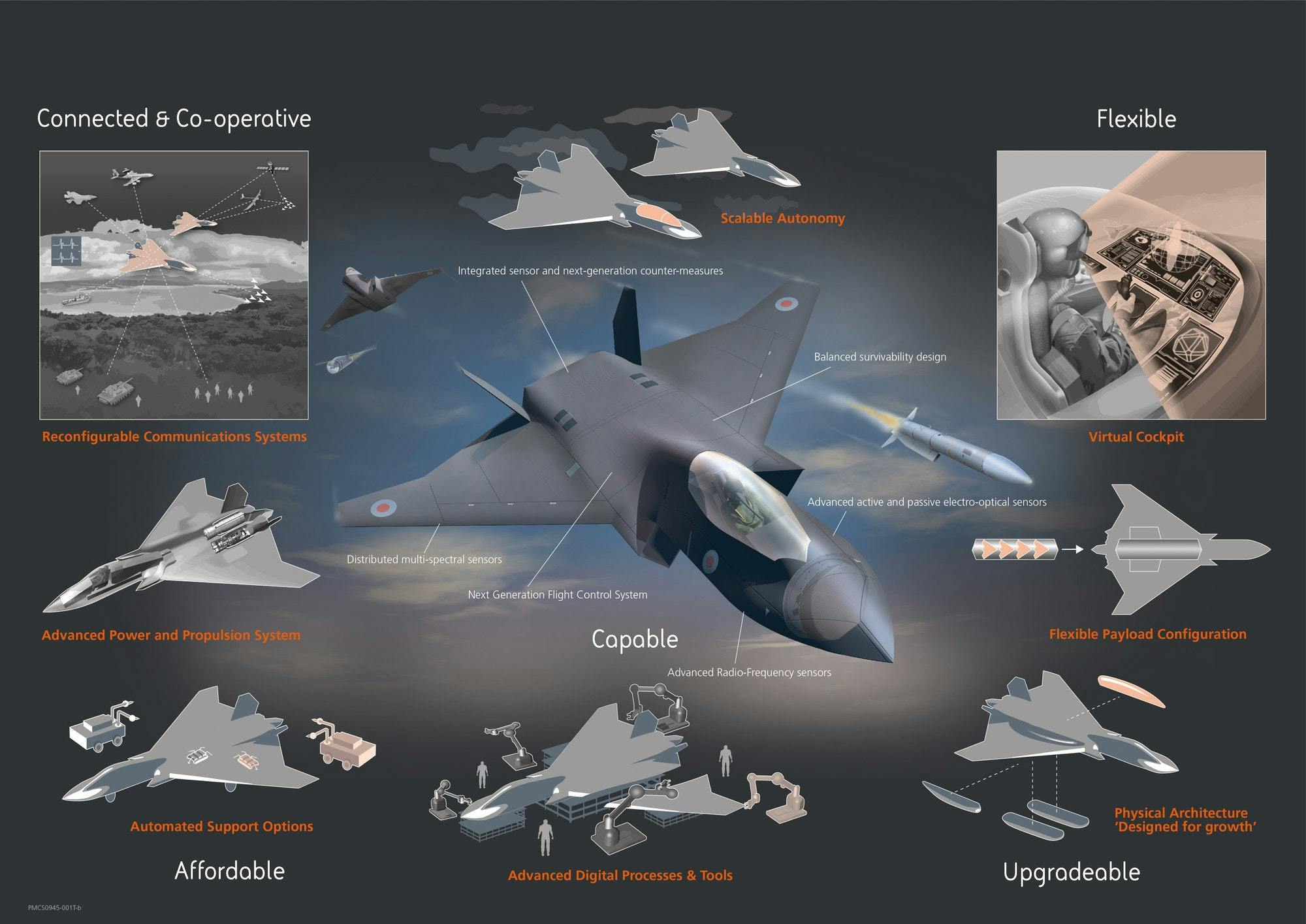
Andrew Kennedy, BAE Systems Strategic Campaigns Director, told press:
“We have to give the government confidence we are working towards a viable international partnership. They have to be confident we are doing something that will be affordable, capable and delivered on time.”
Recently, Leonardo announced that it has demonstrated the performance of a new radar receiver/warner technology as part of its on-going development work for Tempest.
“In a laboratory demonstration for the UK Ministry of Defence and other Team Tempest partners, the new sensor demonstrated a direction finding performance of four times what is possible with a typical radar warning receiver while being just 1/10th the size of a standard system. Leonardo UK is one of the four founding members of Team Tempest, which was brought together by the UK MOD to develop a next generation combat air system for the UK and partner nations: since the team was contracted to begin development work in 2018, Italy and Sweden have announced their intent to work with the UK on this project.
Leonardo’s UK role in the team is to develop Tempest’s sensor package and integrate these sensors into the platform’s mission system. The ambitious timescale for the Tempest project, which is working towards seeing a new aircraft in-service with the RAF in 2035, means that Leonardo in the UK is already hard at work developing some of the advanced technologies which will be needed to face the threats of the future.”
What is Tempest?
The project, named ‘Tempest’ is designed to showcase key technologies that will be important in the future. The jet, might end up looking nothing like the concept model.
BAE say that a future combat air system must be able to survive the most challenging combat environments meaning that payload-range, speed and manoeuvrability will be key.
“We expect that the system will be equipped with a range of sensors including radio frequency, active and passive electro-optical sensors and advanced electronic support measures to detect and intercept threats.”
The system say the defence giant, is likely to operate with kinetic and non-kinetic weapons.
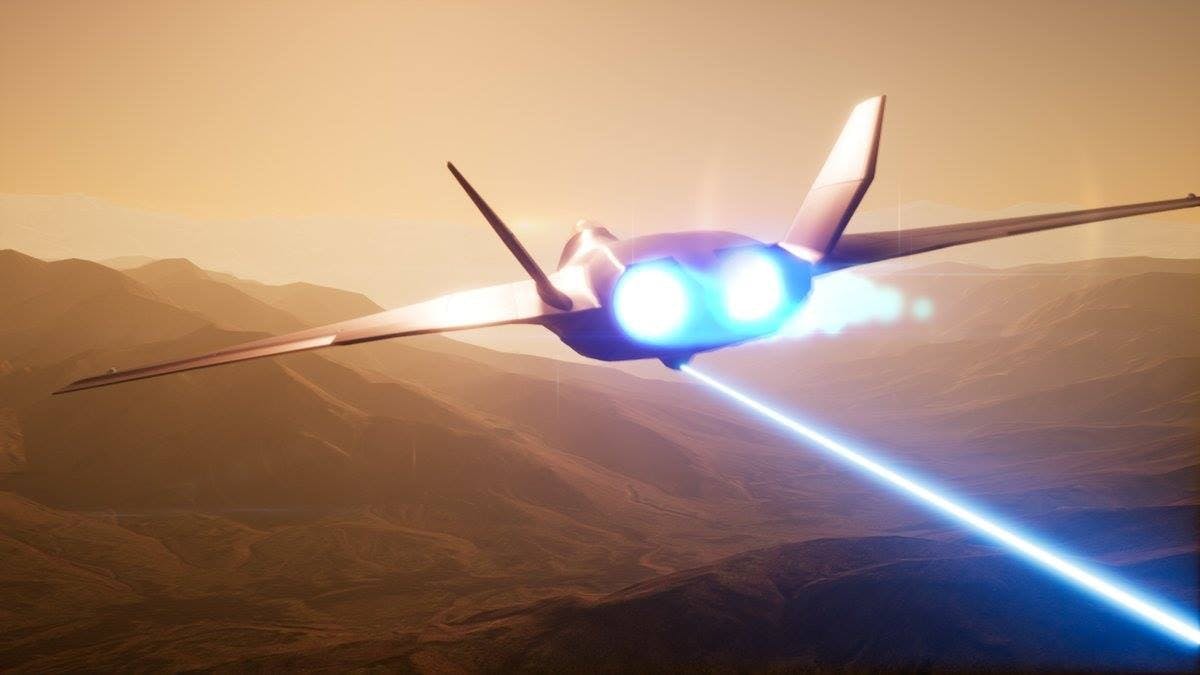
The integration of Laser Directed Energy Weapons for self-defence and use within visual range combat is also highly likely. The use of directed energy weapons on aircraft is becoming reality as the US Air Force will shortly begin testing a laser that will be mounted on an F-15.
“We have got tests starting this summer and the flight tests next summer,” Jeff Stanley, deputy assistant secretary of the US Air Force for science, technology and engineering, told reporters.
“There are still some technical challenges that we have to overcome, mainly size, weight, power.”
The Pentagon last year awarded a $26 million contract to Lockheed Martin for a laser program called SHiELD (Self-protect High Energy Laser Demonstrator). The overall aim is to put a laser system on aircraft with an output of about 50 kw to test their ability against unmanned aircraft and missiles.

Another driver for the concept say BAE is that air forces of the future ‘will require a fighter system that is highly flexible and can be applied to a wide variety of military operations’, a multi-role aircraft then, which is not really all to different to most new aircraft today.
“Operators will have the ability to rapidly adapt the system to perform new functions or to change its performance. Depending on the mission, ‘role fit’ additions such as low observable conformal fuel tanks, weapons dispensers, air launched UAV dispensers, large modular sensors, long range oblique photography systems for reconnaissance and Laser Directed Energy Weapons could be available. Adaptability will be built into the system design, with systems architectures which support a ‘plug and play’ approach, easily integrating new algorithms and hardware.”
The system will also support ‘scalable autonomy’ say BAE, to provide a number of modes of unmanned operation and a range of pilot decisions aids when manned flight is being conducted. This concept is known to most as ‘optionally manned’.

An optionally piloted vehicle is a hybrid between a conventional aircraft and an unmanned aerial vehicle, able to fly with or without a human crew on board the aircraft. The thinking is that, unimpeded by a human’s physiological limitations, an OPV is able to operate under more adverse conditions and/or for greater endurance times.


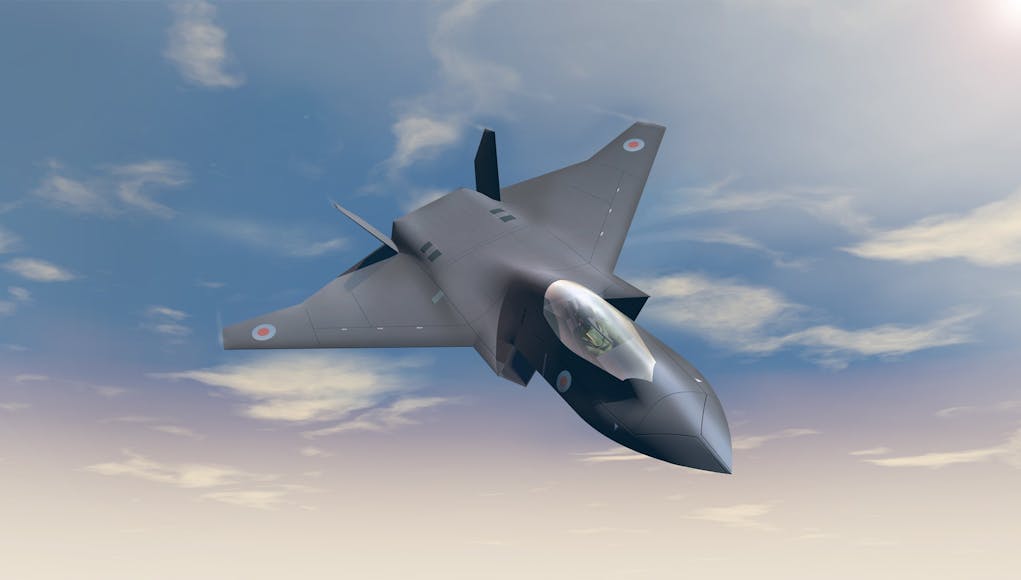
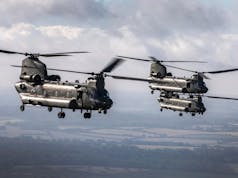
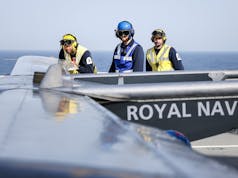
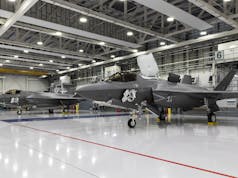
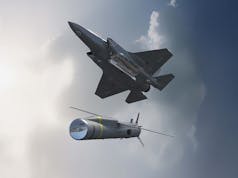

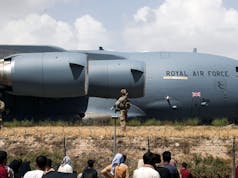

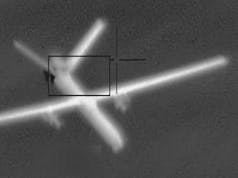
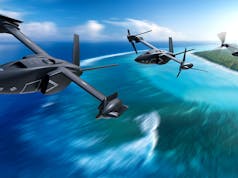
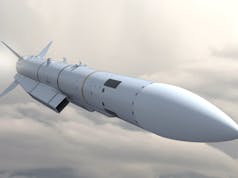

It is paramount for the UK that this programme remains a British driven project to help reestablish our aircraft industry. Any further dilution would reduce the UK’s influence and engineering excellence.
What do you mean by “dilution?”
Do you mean no more international partners? Because the problem with a pure British-only-made plane is that we can’t afford to build them in any significant numbers. The more we can build the cheaper they are per plane and the R&D costs are spread out.
If we build it alone it’ll cost £150-200million per plane and we will be lucky to get 60-100. No one else will buy them as they will be so damned expensive.
With Sweden and Italy involved they take their share of R&D costs and the cost per plane goes down. Probably looking at maybe 450-500 planes being built between the three countries. With us getting around 150 of then.
If Japan join Team Tempest then the R&D costs are now split further and even more planes built, further driving down the cost. May be as high as 650 or more, as Japan currently has approx 300 combat fast jets, a mix of F15s, F2s and F4 Phantoms. F35 will replace some of these but not all. If Japan joins and 650 Tempests are built the split could be something like.
UK: 200
Japan: 200
Italy: 150
Sweden: 100
The price would come down a lot then and may attract the interests of Canada and Australia as export customers, so maybe another 150 between them potentially. Though this is a long way off and possibly optimistic, but Tempest has huge potential that can only be realised if we include partners like Italy, Sweden and Japan.
Just to add, as I cant go back and edit: I’m less concerned with our influence and engineering excellence than i am with our aircraft numbers.
The UK will be leading this project but not doing it alone. I would prefer it that way, with partners, and end up with hopefully 200 Tempests, than to go it alone, ultimately paying more money but having fewer planes in the end.
Its important to retain and develop our industry but not at the cost of our military numbers and capabilities.
Reminds me of how we spent £1 billion on Wildcat helicopters and ended up with roughly 60 aircraft. For the same price we could have bought 200 Black Hawks off the shelf from the US.
I meant no more partners than exist at the moment. I concur with Sweden and Italy being in a partnership, but would not want to see Airbus in the mix. They would quickly dominate the whole programme, simply by applying their huge resources. Influence is important if we are to rebuild our reputation in the aerospace business, to a level where customers will want our products, based on its quality and performance. If we achieve such a level of excellence, the foreign sales will enable a progressive price rebalancing, just as we witnessed on F35. Personally, I’d prefer the RAF to field fewer airframes and end up with a truly innovative aircraft, than a compromised product, brought about by a divergent wants lists from multiple customers. There is a strong possibility the manned fighter variant, will be only around 20% of the total tempest fleet, which could result in cheaper overall purchase and operational costs in the medium term?
You say you’d prefer the RAF to have fewer but innovative planes. My worry is that we have so few already; no matter how advanced the plane is it can only be in one place at a time.
Even if they cost a fantasy 20 million each do you honestly think we would end up with more airframes?
The sad reality of reducing numbers is that without some sort of crisis the numbers/budgets will always remain at the previous highest number.
Airbus don’t have hedge resources for fighter aircraft. They are the least active of the Typhoon partners having not secured a single international deal and have already been put in to play second fiddle with dassault. The bigger problem with airbus is the Germany government that comes with it. No Budget and big ideas in what it should be allowed to do. Japan would be great to see in the mix and possibly Saudi with big budgets and no much to add to the mix.
Add in that Spain went with Indra as their national partner rather than Airbus Military (who are based mainly in Spain). This led to Airbus spitting out the dummy in a big way…
This is shaping up well, UK in the lead but with Italy and Sweden, both proven technology developers and exporters globally, joined up. If we could add in an Asian partner as well, perhaps South Korea, would be a real global force.
Korea has its own KF-X program so unlikely. We should go down the same route as the F35 did, secure some Tier 1 partners or even peer partners then offer other nations Teir 2 and 3 status so they can supply parts or maintenance services if they commit to a qty.
I’d like to see Japan join in
South Korea is developing their own fighter at the moment so I doubt they will. Japan is a potential partner.
Still not convinced this will become a reality, Japan built the F3 prototype but no orders followed. What it allows Japan to demonstrate is that its a credible partner and its what the UK did to achieve Tier 1 status on the F35 through the Replica programme.
My other fear is the UK ensuring we have no production gaps between the Typhoon and Tempest. Yes the UK can produce part for German and Spanish Typhoons that look like they will be ordered but its not the same as assembling and integrating a compete aircraft. If this was shipbuilding their would be absolute uproar at the lack of orders to keep production lines open. As we know from the submarine program once skills are gone it costs to far more to reskill.
Which is why I firmly believe we should purchase another 40 or so Tranche 3 Typhoons to replace the older Tranche 1s.
If there is no further Saudi purchase the UK would be crazy not to order further Tranche 3 to maintain skills rather than lay off staff just to retrain them again for tempest. Hopefully something can be sorted with Saudi as I have a feeling the UK would cut back on F35 orders to fund the Typhoon order book until 2030.
If the additional 48 Saudi orders roll out we should still order another 30 odd Tranche 3’s to keep the line going at a decent pace.
The strategy behind this project seems to be very similar to the Meteor programme. Get it started, write the spec as broad as is feasible and then identify partners (companies and countries) with tech that complements and expands what we can already do. This reduces risks grows the potential market for the final product.
It also ensures that we have and retain considerable influence over the project during the crucial start up phase. As we can set the joining terms for partners we can retain significant influence and in this reguard we appear to have been pretty smart in what we have offered.
There is another point to note. Bringing in partners with complementary tech means that we get to see “how it is done” without any of the risks / costs associated with doing it for ourselves. That means that should things go all 1940’s we will not be starting from an entirely blank sheet of paper. Defence is the ultimate insurance policy for any nation state and knowhow is a critical part of that insurance policy – in peacetime so is cost – so partnerships for mid-sized powers like the UK is a sensible compromise way to go.
I would like to see Japan come on board. They are technologically very capable, an island nation in a similar geographic / geopolitical position to ourselves (i.e. astride or very close to major continental trade routes) and similarly dependent on global trade. They are also expanding their defence forces at the moment, so a good market for Tempest…
Nice to see the programme gaining momentum and the tone of some of the comments from the CEO’s suggests some company investment as well (possibly). By the way Tempest appears to be a continuation of project Replica…
https://en.wikipedia.org/wiki/BAE_Systems_Replica
Grainy picture:
https://www.newscientist.com/article/dn3590-secret-uk-stealth-plane-project-revealed/
In all the fanfare on Tempest. What happened to Taranis?
Why have we not pushed that further? Or have we just developed it, then shared the tech and binned it?
Hi Daniele,
I seem to remember we teamed with the French to take it forward. But according to Wikipedia Taranis or part thereof will appear in the Future Combat Air System – the competitor to Tempest I think!?
https://en.wikipedia.org/wiki/BAE_Systems_Taranis
Some tech crossover and the Tempest is envisaged as having its own drone fleet. BAE, Dassault and France were ready to proceed to flyable prototype stage of Taranis in early 2018 but UK government pulled funding on the six year project due to budget shortfalls (and probably threw what little it did have it into Tempest instead). Project is officially mothballed but French have pressed on alone and in partnership with Germany.
Thanks for the clarification WatcherZero. I wonder if / how much of that decision was driven by France wanting to take control of the project?
I think Taranis was proposed to be the basis of a joint Anglo French UCAS, but it looks like all of that is now dead in the water…
Anglo French cooperation as far as technology goes appears to be stone dead, all be it, without an official pronouncement of death, the body has been left on ice, so to speak.
This must be very frustrating to the joint team that’s been working on the project, but the reality is the technology developed, could be used by competing camps in the European future fighter or Tempest.
Neither camp will give the other an advantage, so that’s the end of that….
Taranis (it would seem) is just another step towards Tempest, proving technology etc.
An important step though.
My take-away on this is the “optionally manned” feature (just like the projected U.S. Gen VI Air Dominance program). It will be either its own drone controlling itself or others in especially high threat missions. I can see manned missions in a stand-off command role for swarms of drones. The Israelis are using refurbished ex USAF F15Bs and Ds as command aircraft.
Cheers
Absolutely Helions, Tempest blurs the boundary between manned and unmanned.
I wouldn’t be surprised to see Taranis back in the air again, as part of the wider Tempest program incorporating tests into UCAV loyal wingman type drones.
In fact with a Typhoon, Taranis and and the airliner avionic test bed fleet taking shape.
Tempest is really taking shape, I have my fingers crossed for SDSR2020.
Tempest will be under the magnifying glass, as step two of the program is going to require significant funding to finalise design and construction of the demonstrators.
My cynical take on it – British boffins like to hog the budget pushing the boundaries of science. It’s good for their cv’s and gives them a nice gig till retirement.
When production starts their jobs become less interesting.
Probably shared the tech then binned it.
Makes me wonder though: couldn’t we just build Taranis, get 2-3 squadrons worth and get our deep strike capability back?
Also, would it be feasible to build carrier capable versions for the purpose of a) strike, b) AEW version and c) airborne refuelling like the Americans have done with the MQ25?
Could fill a few roles.
There are issues, Americans have really struggled with carrier drone.
UCLASS was greenlit in 2006 as a strike craft, then it was downgraded to a stealthy scout, then downgraded again to a fuel carrier. While prototypes were stealthy flying wings all the final competitors were just modifications of existing non-stealthy twin wing drones.
wasn’t that more an unwillingness on the us navy pilots to cede ground to drones….. pretty sure the tests northrop grumman did worked flawlessly… by removing the possible isr/strike role they kinda hobbled themselves really….
Increasing the work force from 1,000 to 2,500 is totally meaningless. It doesn’t tell you who these workers are or what they are being employed to do. Engineers? Administration? Budget? Brothers-in-law?
Sweden and Italy have only signed letters of intent and have not detailed any proposed expenditures.
Half of this article details what the Americans are doing, not what BAE and Leonardo are doing.
I remain skeptical.
Its based on a press release from the Taranis team. Basically they only have until the end of the year to produce a business and technical feasibility case for proceeding beyond the design stage to prototype stage (flying airframe testbed), they are running behind and so have had to increase their manpower to meet the deadline.
*Tempest* not Taranis Team
Interesting artic but lacks any real detail of what’s happening in real terms. As in what part are the other partner nations working on to make this plane a world-class system. What initial finances are being put in & what their own requirements are for the plane. Until these questions are answered along with others it’s hard to judge were we are at not to mention were we are heading.
Stage we are at is UK government has given a £2bn funding for development of business and technical feasibility case which is due by the end of the year. At that point government will have to decide whether to progress to prototype stage which would likely involve building a flyable airframe with an existing engine that can test the structural design before a later prototype would have integration of the various technologies and a newly developed engine. Other countries have signed technical co-operation agreements, that is joint development and licensing of the development work and sub-technologies. Tempest is an industry rather than government procurement led project and there are a lot of Italian companies involved in the technology development that would own full or partial patents on various technologies developed.
It sounds a bit rushed to be honest, but they know they need to be ready for 2035 as the Typhoon order book will be well and truly dried up and they need a replacement. There has been a lot of faffing around by the MOD on different requirements like Taranis and other UAV’s so looks like we are also playing catch up.
Hopefully they keep the airframe relatively simple while incorporating stealth, a lot of these future technologies could be incorporated later in the development and production stage. The software to make the airframe actually fly seems to be the longest and most expensive part to test and needs completed before anything else will get off the ground.
The only collaborative ‘project’ that well as I recall, was mating the Merlin with the North American Mustang.
Can anyone point me to a modern collaboration at the leading edge of a weapon systems development that went well? Typhoon and previously, Tornado, were dismally slow. Other projects for the U.K. armed forces were abandoned after wrangling broke out and American license built sub-systems or even major components preferred over the U.K.’s offerings by our European partners. (1)
Be honest, the only reason is (or was?) political and back-scratching. (2)
(1) Tom King promising Germany the U.K. would flog Ferranti to a Euro consortium when that country wished to insert a local built Hughes radar in Typhoon.
(2) A wholly British Rolls Royce engine for the Jaguar, Ardour was named after a French river for no easily explained reason.
I would like to see Japan involved they need more airframes. The yanks wont be happy if Japan joins in, as they will lose a lot of custom. And Japan will be looking to build as well. But it would possible rule out any Franco German involvement in the future, as there tec and cash would not be needed. Hopefully with a lot more airframes , we could buy more and have exports.
I would too and its another reason to go for a large fighter, issues with US failing to share technology or production share with Japan or license technologies for Japanese domestic aircraft programmes aside. One of the main things Japans been unhappy about is the combat range of the latest US jets as it has a lot of territory to patrol and body size is one of the main range limiters (wing length and fuel capacity). Increased range would also benefit the UK operating profile as well (and make carrier adaptation easier as the landing gear strength required to survive carrier touch down tends to be very heavy and larger wings increases range).
I would ditch any nod towards carrier capability, it would limit the design and client base.
I would go as far as to say Tempest needs Japan to be viable proposition. We have very similar needs to the Japanese regarding F2/Typhoon replacement.
We definitely need an airframe that’s F22 sized, with ample space for internal weapons, fuel and most importantly, power generation.
I would stipulate a 1000 mile radius of action…
I’d say THIS is the future in terms of a manned/unmanned mix of combat airframes… Very nice example of of how fast things can happen when there is the will to do it. Not particularly costly either. It would be an excellent addition to our air forces.
https://spectrum.ieee.org/aerospace/military/boeings-autonomous-fighter-jet-will-fly-over-the-australian-outback
Cheers
The chances of Tempest happening must be pretty slim. First problem will be definition of its role: Japan wants a heavier, long range air superiority fighter that can keep Chinese attack planes at bay, a sort of F22 Mk 2. The RAF should want similar for long-range work out over the Norwegian Sea and BALTAP. Italy not so much, a scaled-down air defence/tac air fighter like a next-generation Typhoon would fit the bill, Sweden similarly.
We tend to gloss over the differences between air superiority and tac air, very different designs and requirements. Can see that being a big stumbling block for Tempest. Whichever direction it goes, the USA will inevitably have a competitive and probably superior and cheaper new aircraft rolling off the production line to defend their market share in Japan, Australia, Canada etc. While the Franco-German-Spanish offering will be better-placed to win air defence/tac air orders, with an initial production run of 400+ aircraft.
I would love to see it succed, but doubt we can make it work or that we can afford the large investmemto from our cash-strapped defence budget.
Other major defence news sites are mostly too weird, I write about F-3 a little bit. The most of hardware tech development at 5.5th generation have completed.
Japan’s F-3 1st prototype & UAV is scheduled rollout by 2030, deployment while 2035. The F-3 first half model is going to rollout at 5.5th generation.
Excepts IFF & interoperability to US(for common missiles/shares datas), Japan’s F-3 is made domestically (UAV too). The F-3 6th generation version which more focused in air superiority(post F-15Jmisp) equips more high tech(more ideal Engine/Optical weapons/more high-tech stealth ability/UAV with more roll/more wide network) is going to deploy while 204x.
New sample image of F-3 has common to old Tempest replica, I suppose that UK & JP already have any technological cooperation/consultations.